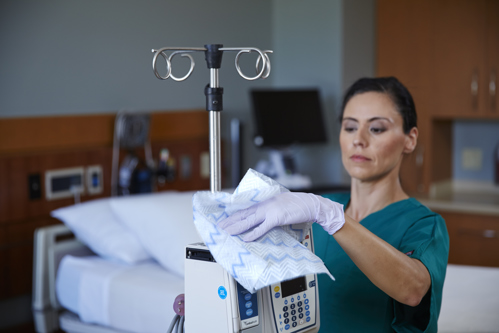
The pandemic has brought the entire world to a state of uncertainty, but COVID-19 isn’t the only infectious disease that healthcare professionals, vulnerable individuals and the rest of the general public should be aware of. According to the World Health Organization, lower respiratory infections are among the most deadly communicable diseases in the world, ranking as the fourth leading cause of death in 2019. The severity of infectious diseases makes it critical for individuals to understand their risk and do what they can to stop the spread.
While it’s important for the community to work together to mitigate the spread of virus and infection, hospital workers and care providers are at the front lines of infection control. Following best practices for infectious disease cleanup and biohazard remediation is essential to controlling diseases and preventing infectious disease outbreaks, especially in a healthcare system.
Understanding the most common infectious diseases
According to the Australian Institute of Health and Welfare, infectious diseases, also referred to as communicable diseases, can be transmitted from one person or animal to another directly by body fluid, indirectly or by vectors. Bacterium, parasites and other toxic products are the general causes for infectious diseases.
Beyond the novel coronavirus, some of the most common infectious diseases in Australia include influenza, chlamydia, campylobacter and gonorrhea, according to the Australian Institute of Health and Welfare.
How to reduce the spread of infectious diseases in hospitals
While the burden of infectious disease in Australia is noted as relatively small by the AIHW, it’s still important to prioritise reducing infection risk and preventing the potential for disease spread, especially in hospitals. Here are some of the ways to reduce the spread of infectious disease in healthcare settings via infectious disease decontamination:
Promote hand hygiene
The act of washing hands on a regular basis doesn’t only improve the immune system, it also reduces the risk of contagious diseases.
Encourage vaccinations
Immunisation is one of the easiest ways to prevent communicable disease transfer and has a reputation for reducing infection rates. Encouraging the general public to stay up to date on their vaccinations can keep them out of the hospital and reduce infectious disease spread among vulnerable people.
Understand the common sources of infection
According to a systematic review published in Infection, Disease & Health, there are nearly 165,000 hospital-associated infections that occur in Australian care facilities every year. This makes HAIs the most common complication faced by vulnerable individuals staying in a hospital. Understanding the most common sources of infection in these settings can help care workers and hospital residents make better-informed decisions while in a hospital environment. Those include:
Follow a thorough infectious disease cleaning protocol
Healthcare professionals must work together with cleaning staff to curate a regular cleaning and disinfecting schedule that follows hospital standards.
Infectious disease cleanup: Best practices
By following a step-by-step cleaning procedure, you and your team can ensure your hospital environment is in the best shape possible to treat and care for vulnerable individuals while reducing the spread of infectious disease. Here are some best practices to consider, as detailed by the Centers for Disease Control and Prevention, for disinfecting contagious diseases:
Rubbermaid tools and equipment for infectious disease cleanup
At Rubbermaid, we understand the importance of infectious disease cleanup best practices and want to provide all involved with hospital environment cleanup and biohazard remediation with the best tools and resources possible. With the right combination of equipment, technique and solvents, you can improve decontamination efforts and prioritise infection control.
These tools and biohazard cleanup best practices can reduce the risk of infectious disease spread and mitigate risk of HAIs. For more information on health care environment cleaning tips and equipment, reach out to us directly.